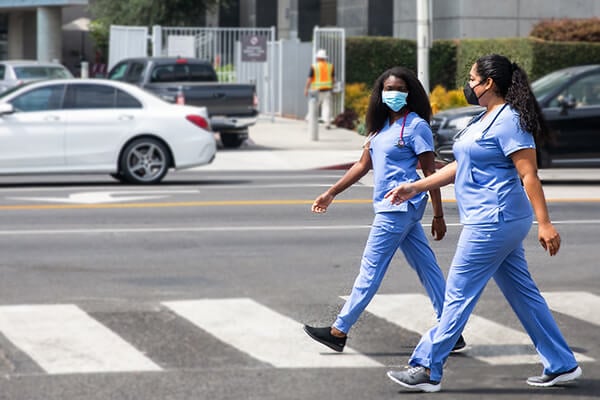Fresh out of nursing school, I went straight to work in an intensive care unit (ICU), the Neurological Critical Care Unit (NCCU), at one of the big hospitals in my hometown. I was the classic eager-and-energized new RN, feeling ready for action. I worked as a neuro nurse for eight years and spent the first year on night shift. One night, not long after I began, a code blue took place across the hall from my station at about 3:30 in the morning.
The Setting
Each ICU patient had their own spacious room and a total care hospital bed. The rooms were large enough that we could fit four to six of those giant beds in a room if necessary. My colleague’s patient was in a critical, unstable condition after battling complications from a massive subdural hematoma for several days.
The Code
Within seconds of the code activation, seasoned coworkers were already jumping into action. The crash cart was pushed into the room. The patient’s nurse was performing chest compressions and two other RNs were talking, assessing, and grabbing medications from the crash cart. In a blink of an eye, the on-call hospitalist, house supervisor, lead pharmacist, surgical ICU charge nurse, respiratory therapists, lab technician, on-call chaplain, security, and a handful of trauma residents quickly arrived. The room was filled with chatter and orderly chaos.
As for me, I was near the foot of the bed, watching all the movements of the professionals. You could tell who had done this more than a few times. My heart was pumping fast and I felt the adrenaline rushing through my body. I thought to myself, “I need to be doing something or get out of the way.” I grabbed a paper towel from the towel dispenser at the room’s sink and started documenting, taking note of every step including orders, medications given, shocks delivered, vital signs, and the time each action was performed.
Victory
After about six minutes, the bustle of the room had slowed down. The patient’s vitals had returned to a viable condition and she was declared stable by the team leader. And just like that, the few dozen people who had gathered around the patient and outside her door dispersed, returning to their normal duties. The crash cart looked like it had exploded its contents. The patient’s bedding and gown were disheveled. Supply wrappers were littered on the floor. However, with the monitor displaying the patient’s stable vital signs, all we saw was harmony and triumph.
Making A Difference
All through my younger years, I was a shy introvert that found human anatomy and physiology highly interesting. I earned my nursing degree knowing the information, but I wasn’t sure if I could actually help anyone. My insecurities and doubt weighed heavily on my heart, but I marched on while receiving encouragement from my family and friends.
The night of my first code blue affected me, but I wasn’t scared. It changed the way I felt about taking care of others. Witnessing the capabilities of healthcare professionals gave me the courage to embrace my passion: to follow my heart. I felt empowered. I felt equal to the “big dogs” in that room. We were a team with one shared goal to save her life.
My heart had led me in the right direction all along.
When the adrenaline wore off, my heart was still warm with excitement. The warmth felt like a blanket of energy, charging up a new level of compassion I had tucked away. I was exhilarated and excited to share with others what I do in my career. Every day I tell myself, “I got this” because I love what I do.
Author Bio
Sarah Madwell, RN




